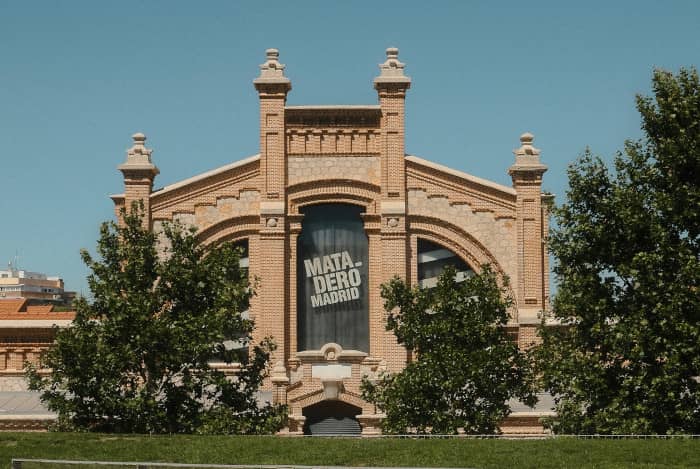
Matadero Madrid: From Slaughterhouse to Cultural Landmark
The Matadero Madrid is an emblematic site in Spain’s capital that, over a century after its creation, still draws the attention of locals and tourists alike.
Its transformation into a cutting-edge cultural center has established it as a contemporary art landmark, but to understand its current significance, we must explore its origins as one of the most innovative slaughterhouses in Europe.
The History of Matadero of Madrid: A Hub of Supply and Progress
Built between 1911 and 1924, the Matadero of Madrid was created to address the increasing need for improved sanitation and supply in a rapidly expanding city. Architect Luis Bellido designed this ambitious project, which served, not only as an industrial slaughterhouse, but also as a livestock market. Bellido embraced the architectural trends of the time, endowing the complex with a neo-Mudejar style, typical in many of Madrid’s industrial buildings, combining exposed brick and iron in an attractive and functional way.
For over 70 years, this slaughterhouse and market played a crucial role in Madrid’s economy, providing fresh meat and meat products to local markets and supplying city businesses. The “Casa del Reloj,” the administrative building that still stands today, was the nerve center of this site and remains a historical symbol of Madrid’s industrial era. Since 1996, the Matadero ceased operations and remained abandoned for several years until its rebirth in the 21st century as a cultural center.

Cultural Renaissance: From Slaughterhouse to Creative Space
The transformation of Matadero Madrid officially began in 2006, when the City Council decided to repurpose this historic site to meet the cultural needs of a modern city. Rather than demolishing this iconic complex, Madrid chose to revitalize it, turning it into a space for art and creativity. Today, Matadero Madrid hosts everything from art exhibitions to theatre performances, film screenings, and educational workshops. It has also become the venue for festivals, markets, and design fairs that attract thousands of visitors annually.
The redesign preserved the essence of the place, retaining the original structures but adapting each pavilion to its new cultural function. This process allowed Matadero to become, not only a space for entertainment and education, but also a symbol of how history and heritage can be renewed and brought to life in the modern context.
Anecdotes and Curiosities
For those who enjoy discovering hidden stories within buildings, the Matadero of Madrid has many curiosities. During its years as a slaughterhouse, it featured highly innovative facilities for the time, including refrigeration systems to keep meat fresh and a design that allowed for superior hygiene—an impressive achievement in that era. Additionally, the famous “Casa del Reloj” became a reference point in the Arganzuela district, visible from various locations and marking the workday for employees.
Another curiosity is that, although it is now common to see contemporary art exhibitions and modern cultural events, the walls of these pavilions still retain an industrial feel, recalling the hard work of those years. Even the floors and doors maintain some details from the period, a perfect blend of past and present that gives this place unique characteristics hard to find elsewhere in the Spanish capital.

Visiting Matadero Madrid Today: A Cultural and Historical Journey
For both locals and visitors, visiting Matadero offers a unique opportunity to glimpse Madrid’s industrial history and its vibrant cultural scene. With offerings ranging from visual arts to gastronomic events and music festivals, Matadero Madrid is a space for all tastes, ideal for families, young people, and culture lovers. Its revival exemplifies how industrial heritage can adapt to new times, becoming an enviable space for community and creativity.
If you want to discover more stories like this one about the Matadero of Madrid, don’t hesitate to come with us on one of our free tour Madrid .
We’re waiting for you with open arms!